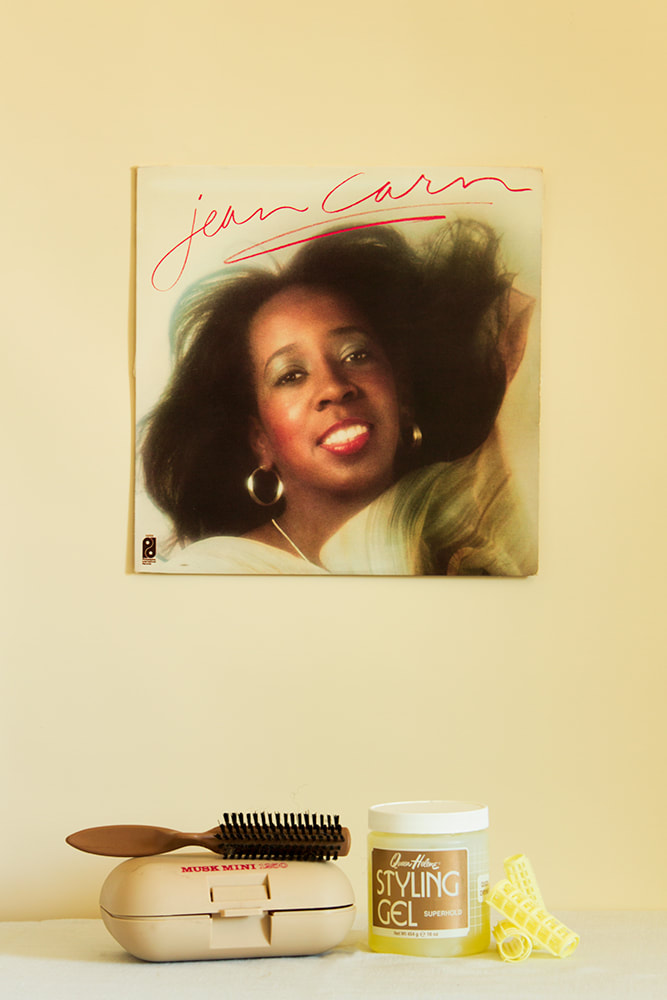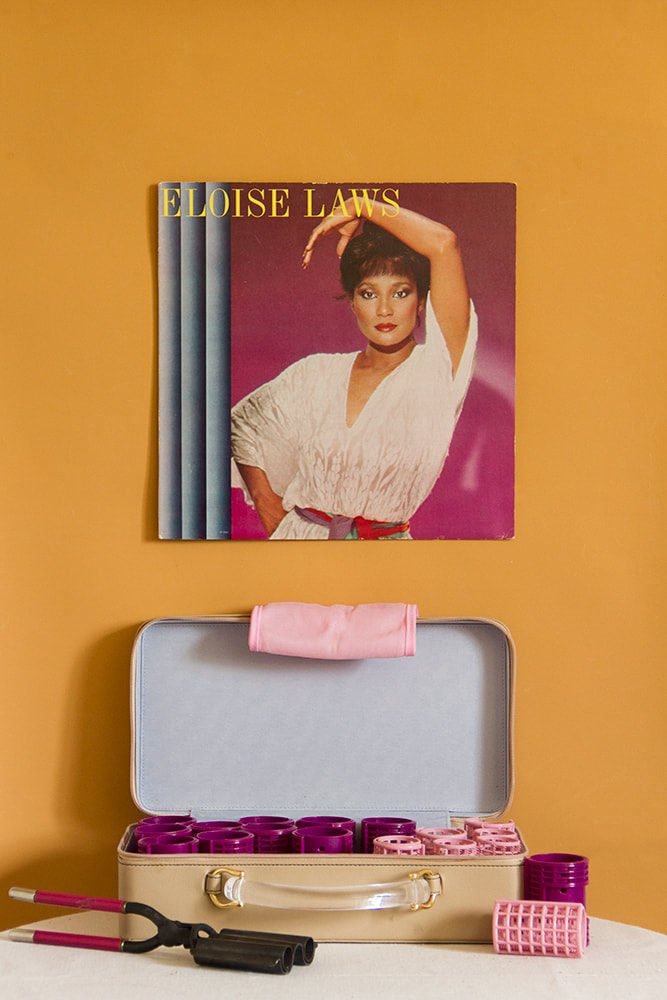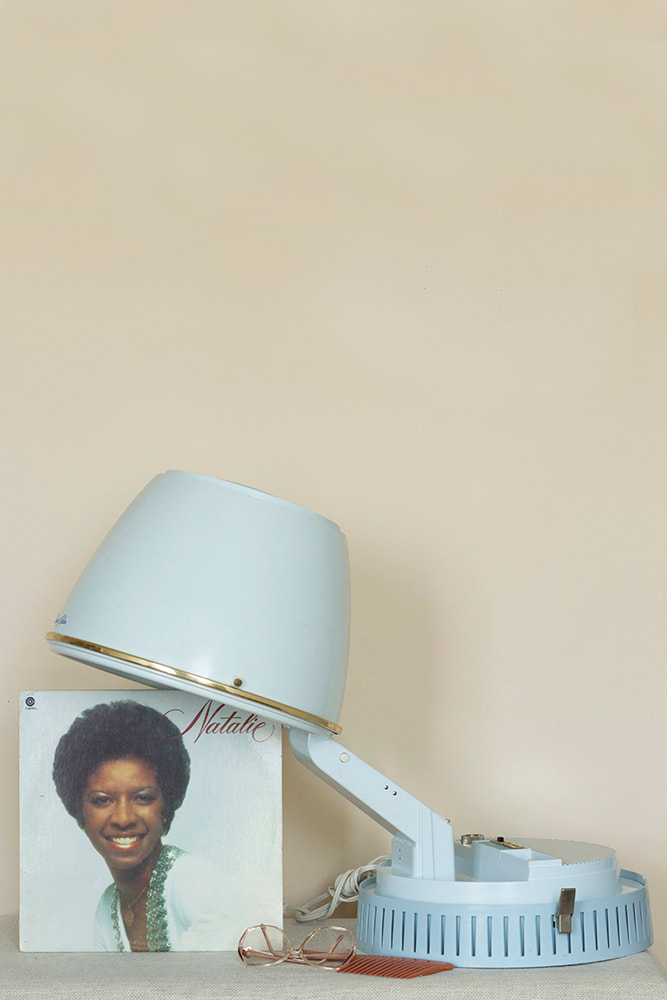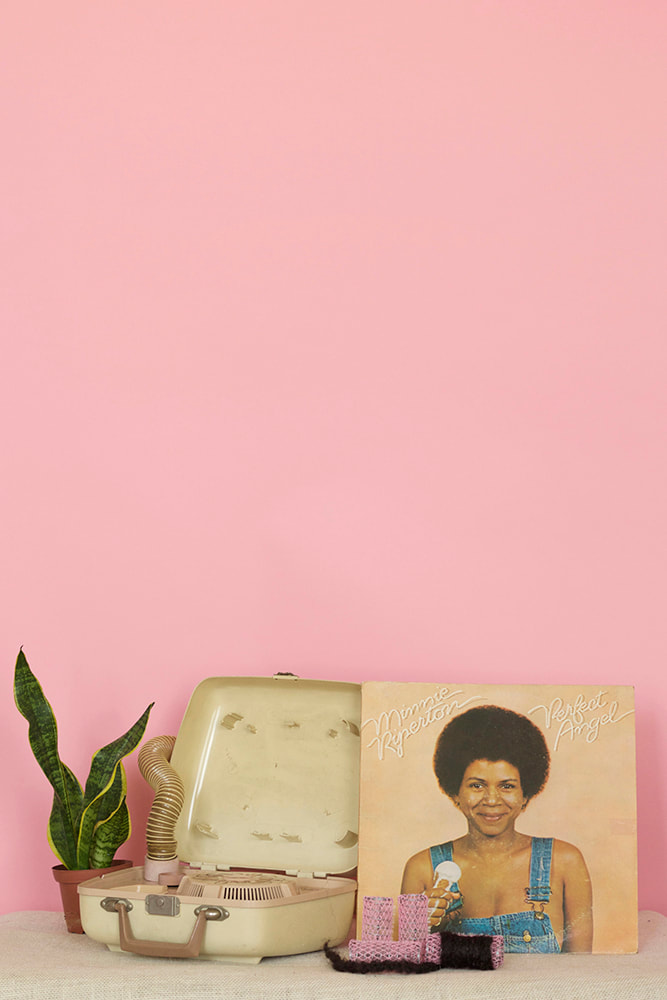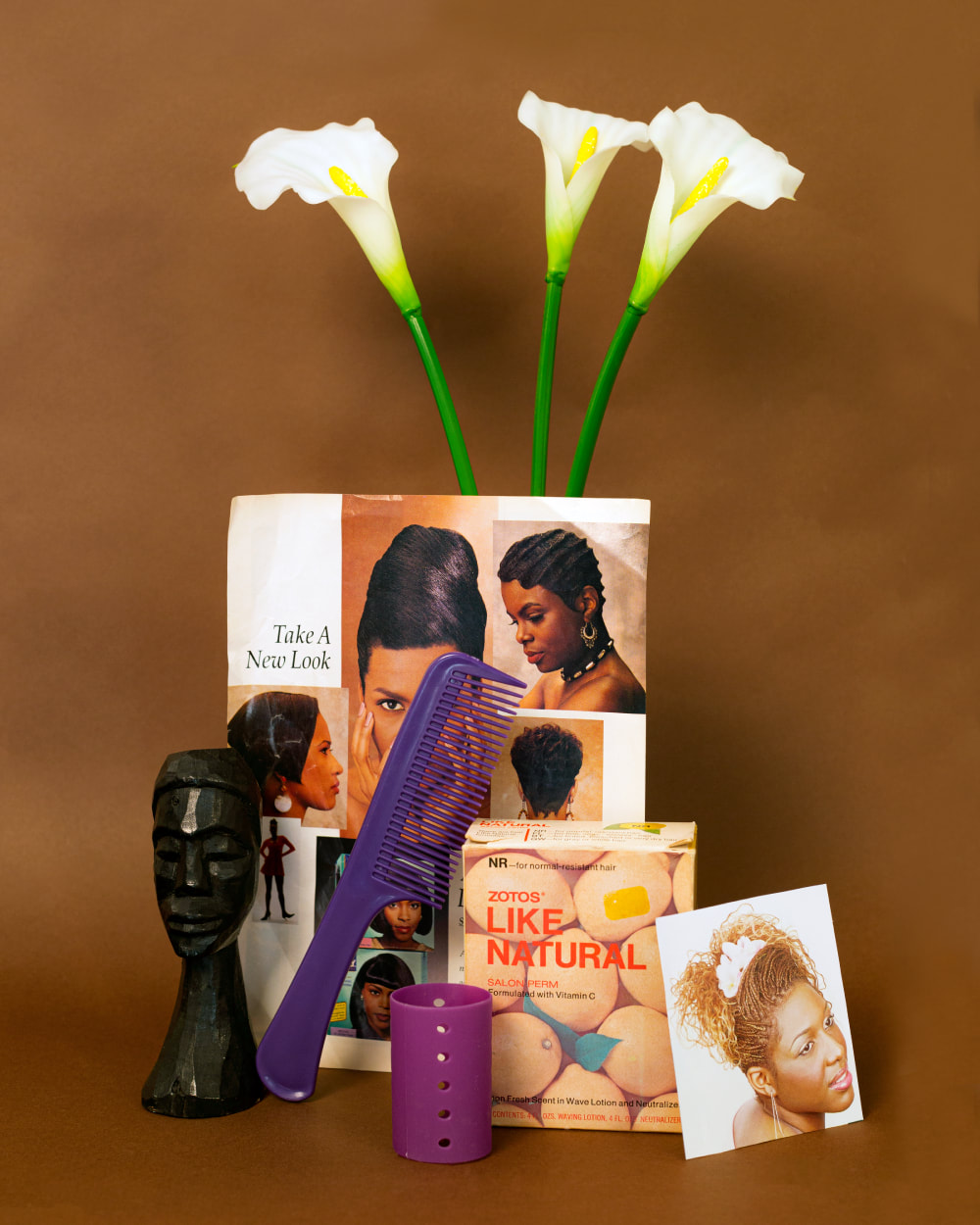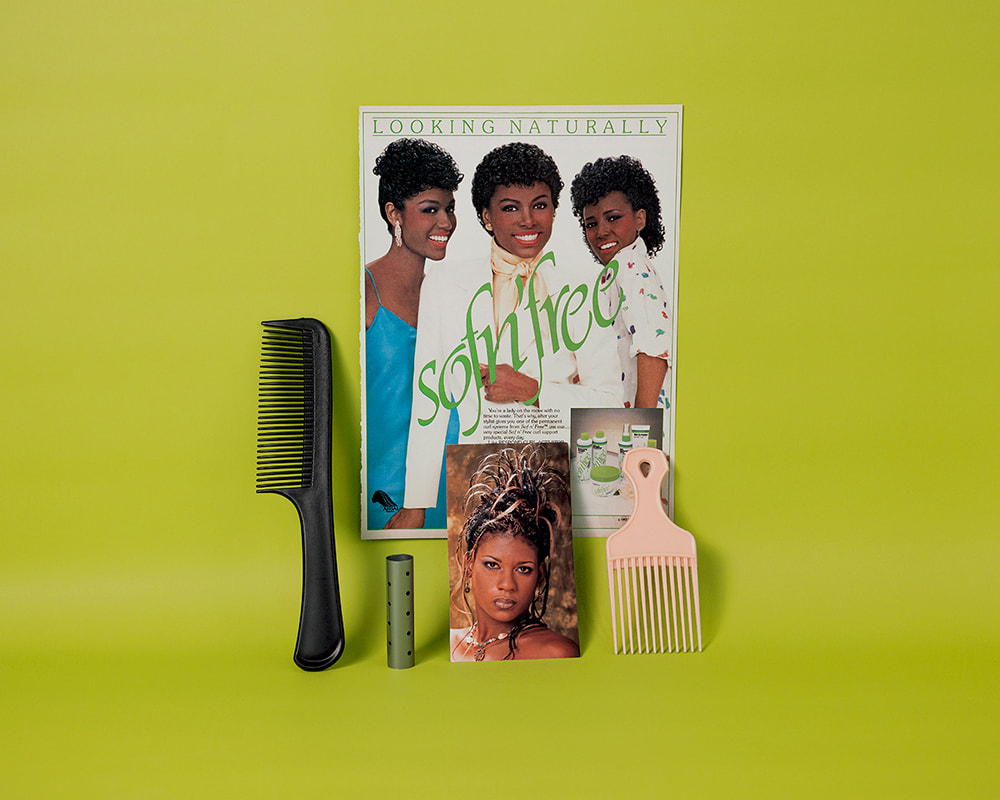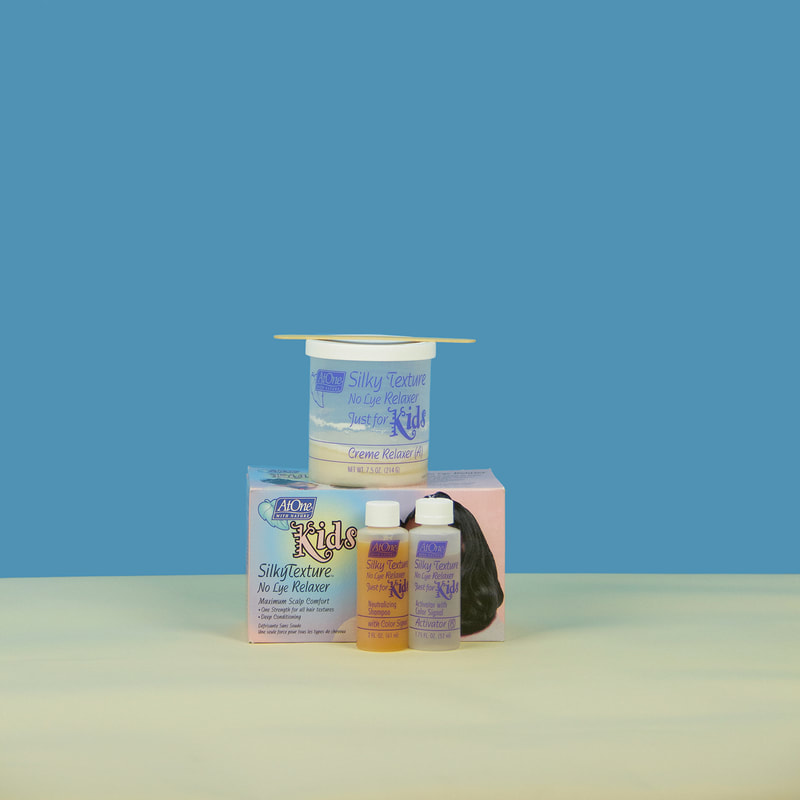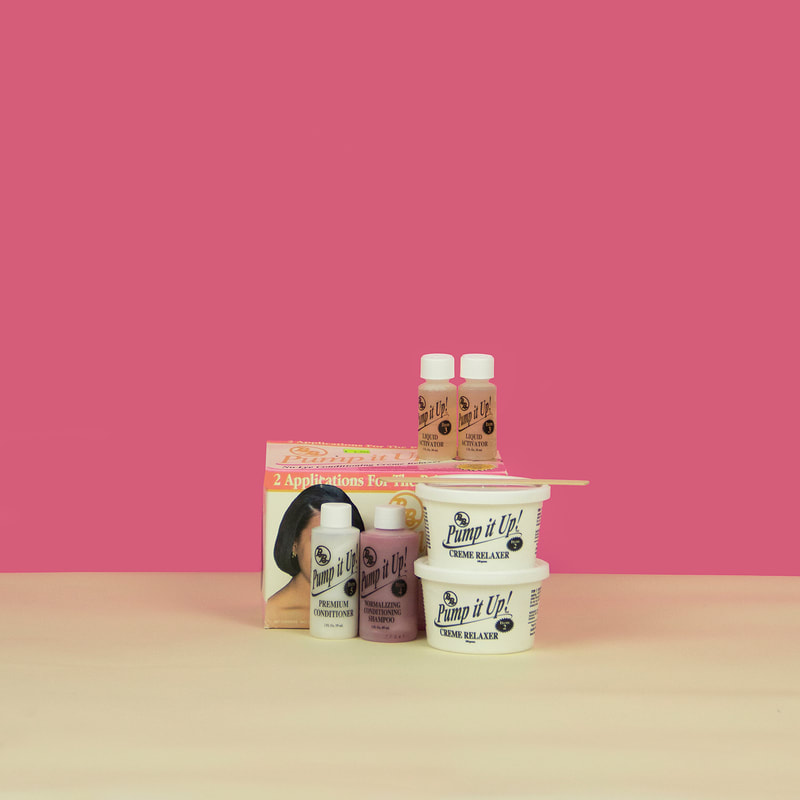This interview has been edited for length and clarity.
|
|
About the PhotographerNakeya Brown was born in Santa Maria, California. She received her Bachelor of Art from Rutgers University and her Master of Fine Arts from The George Washington University. Her work has been featured in exhibitions nationally and internationally. Brown’s work has been featured in Time, New York Magazine, Dazed & Confused, The Fader, The New Yorker, and Vice. Her work has been included in photography books MFON: Women Photographers of the African Diaspora, Babe, and Girl on Girl: Art and Photography in the Age of the Female Gaze. Her photography is featured in A Trillion Sunsets, an exhibition at the International Center of Photography, showing January 28 – May 02, 2022. |
|
Truth in Photography: Tell me more about your photographic practice.
Nakeya Brown: My work incorporates objects and materials from the beauty industry and objects of self-care related to hair care practices. I use these materials partly to create images that represents the lived experiences that I had coming into who I am as a person, through my hair journey. I share intimate moments in a way that is imaginative while pulling from memory and history to center black women and our experiences.
TiP: Do you often do photographs in series?
Brown: Yes. The series that's included in A Trillion Sunsets is called “If Nostalgia Were Colored Brown.” I started the series in 2014. On Saturday mornings, I would listen to R&B music and play in my living room, and create these pictures that represent, for me, vintage black beauty and the historic foundation for #BlackGirlMagic today.
Nakeya Brown: My work incorporates objects and materials from the beauty industry and objects of self-care related to hair care practices. I use these materials partly to create images that represents the lived experiences that I had coming into who I am as a person, through my hair journey. I share intimate moments in a way that is imaginative while pulling from memory and history to center black women and our experiences.
TiP: Do you often do photographs in series?
Brown: Yes. The series that's included in A Trillion Sunsets is called “If Nostalgia Were Colored Brown.” I started the series in 2014. On Saturday mornings, I would listen to R&B music and play in my living room, and create these pictures that represent, for me, vintage black beauty and the historic foundation for #BlackGirlMagic today.
TiP: How do you describe your photos?
Brown: They are majestic, pleasurable, emotive, playful, loving, nostalgic, color-coded.
TiP: How do you proceed when you make photographs? How do you get started?
Brown: I love thrifting in secondhand stores to find what people discard. I bring remnants of the forgotten together with remnants of the personal and I let all of those materials co-exist together. I usually start with the object first whether it's a vinyl or an old blow dryer, and then I look at the colors. I allow the object to guide the way I set up the still life. I really enjoy negative space and giving room for the photograph to have rest. I try to create balance and use my negative space with color to let the objects be the divas of the still life.
TiP: I love that expression. How do you show some of those attributes that you are describing? How do you visualize love or nostalgia?
Brown: For me it's a feeling. It’s about stepping into the black female cultural production that has warmed my heart.
Brown: They are majestic, pleasurable, emotive, playful, loving, nostalgic, color-coded.
TiP: How do you proceed when you make photographs? How do you get started?
Brown: I love thrifting in secondhand stores to find what people discard. I bring remnants of the forgotten together with remnants of the personal and I let all of those materials co-exist together. I usually start with the object first whether it's a vinyl or an old blow dryer, and then I look at the colors. I allow the object to guide the way I set up the still life. I really enjoy negative space and giving room for the photograph to have rest. I try to create balance and use my negative space with color to let the objects be the divas of the still life.
TiP: I love that expression. How do you show some of those attributes that you are describing? How do you visualize love or nostalgia?
Brown: For me it's a feeling. It’s about stepping into the black female cultural production that has warmed my heart.
TiP: How do you frame your photographs?
Brown: Typically, I like center weighted photographs. I always think about how I can balance out the edges. I look to enclose the space by cutting off the outside world. I’m interested in inventing space.
TiP: What about lighting? Is the lighting direct? Is it balanced? In what way does lighting enhance the presentation of the photograph?
Brown: When I'm shooting, I typically make my images inside my house or a light studio. My images are a reflection of the changing spaces that I've been in throughout my life. Wherever I put my feet is my studio. That's where I'm working. That's how I make it.
Brown: Typically, I like center weighted photographs. I always think about how I can balance out the edges. I look to enclose the space by cutting off the outside world. I’m interested in inventing space.
TiP: What about lighting? Is the lighting direct? Is it balanced? In what way does lighting enhance the presentation of the photograph?
Brown: When I'm shooting, I typically make my images inside my house or a light studio. My images are a reflection of the changing spaces that I've been in throughout my life. Wherever I put my feet is my studio. That's where I'm working. That's how I make it.
TiP: Could you complete the sentence, “Truth in photography is…”?
Brown: Truth in photography is finding your joy in it.
TiP: How do you think these objects and the photographs of them communicate the black identity?
Brown: Making still lifes with hair objects, I'm able to visualize the pride and hustle in our journey, but I'm also able to be a little bit more critical in terms of how from hair straightening and perm kits were used to limit Black women to the confines of Eurocentric beauty standards in some instances.
TiP: Your photographs have a very here and now presence, but at the same time, they're alluding to the past. In the contemporary world, what’s the importance of this?
Brown: Looking at older objects is my way of witnessing time. I hope that when people look at my work, they think about the significance of time—past time, future time and how the human experience is connected across time.
Brown: Truth in photography is finding your joy in it.
TiP: How do you think these objects and the photographs of them communicate the black identity?
Brown: Making still lifes with hair objects, I'm able to visualize the pride and hustle in our journey, but I'm also able to be a little bit more critical in terms of how from hair straightening and perm kits were used to limit Black women to the confines of Eurocentric beauty standards in some instances.
TiP: Your photographs have a very here and now presence, but at the same time, they're alluding to the past. In the contemporary world, what’s the importance of this?
Brown: Looking at older objects is my way of witnessing time. I hope that when people look at my work, they think about the significance of time—past time, future time and how the human experience is connected across time.
|
|
Delve deeper |

